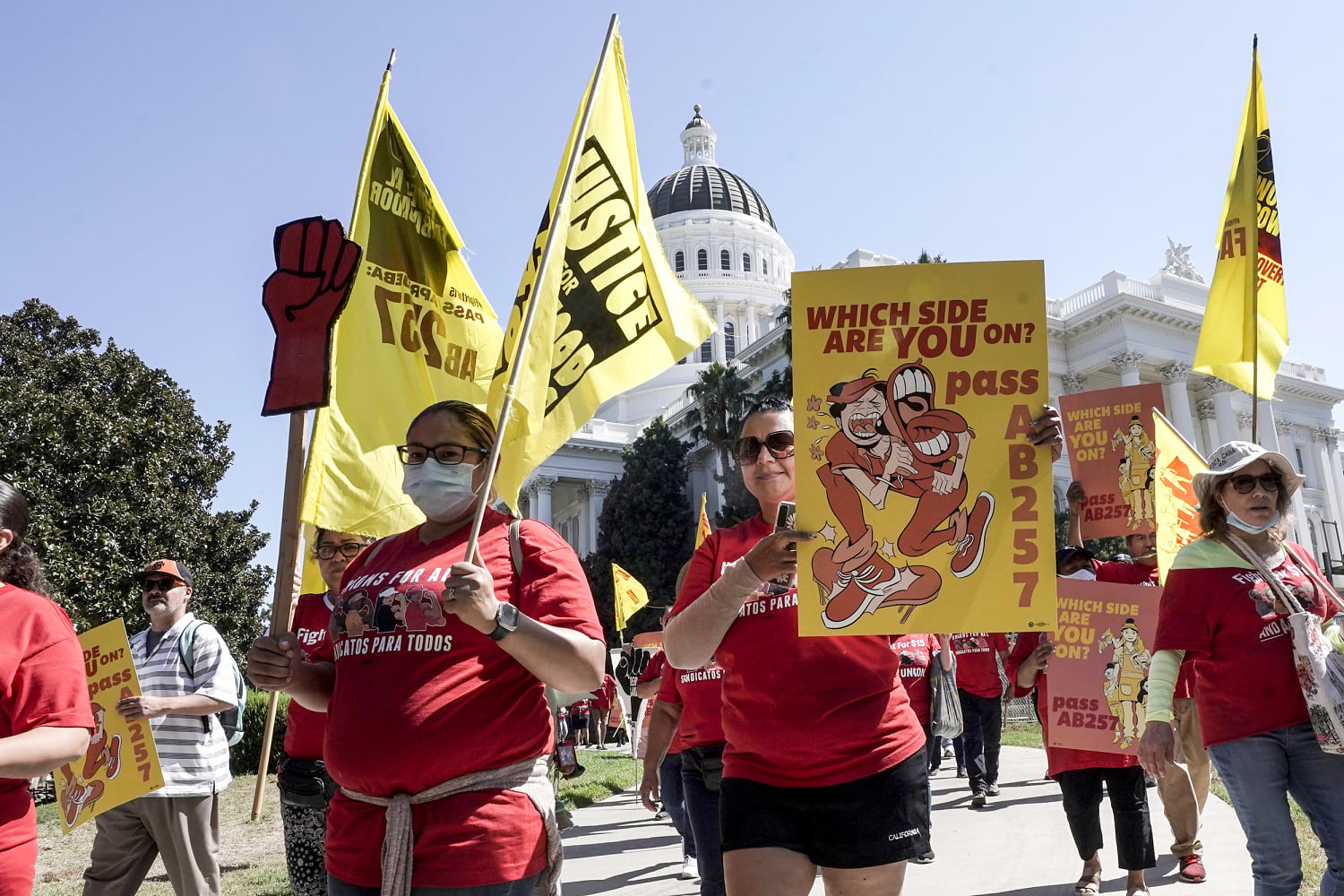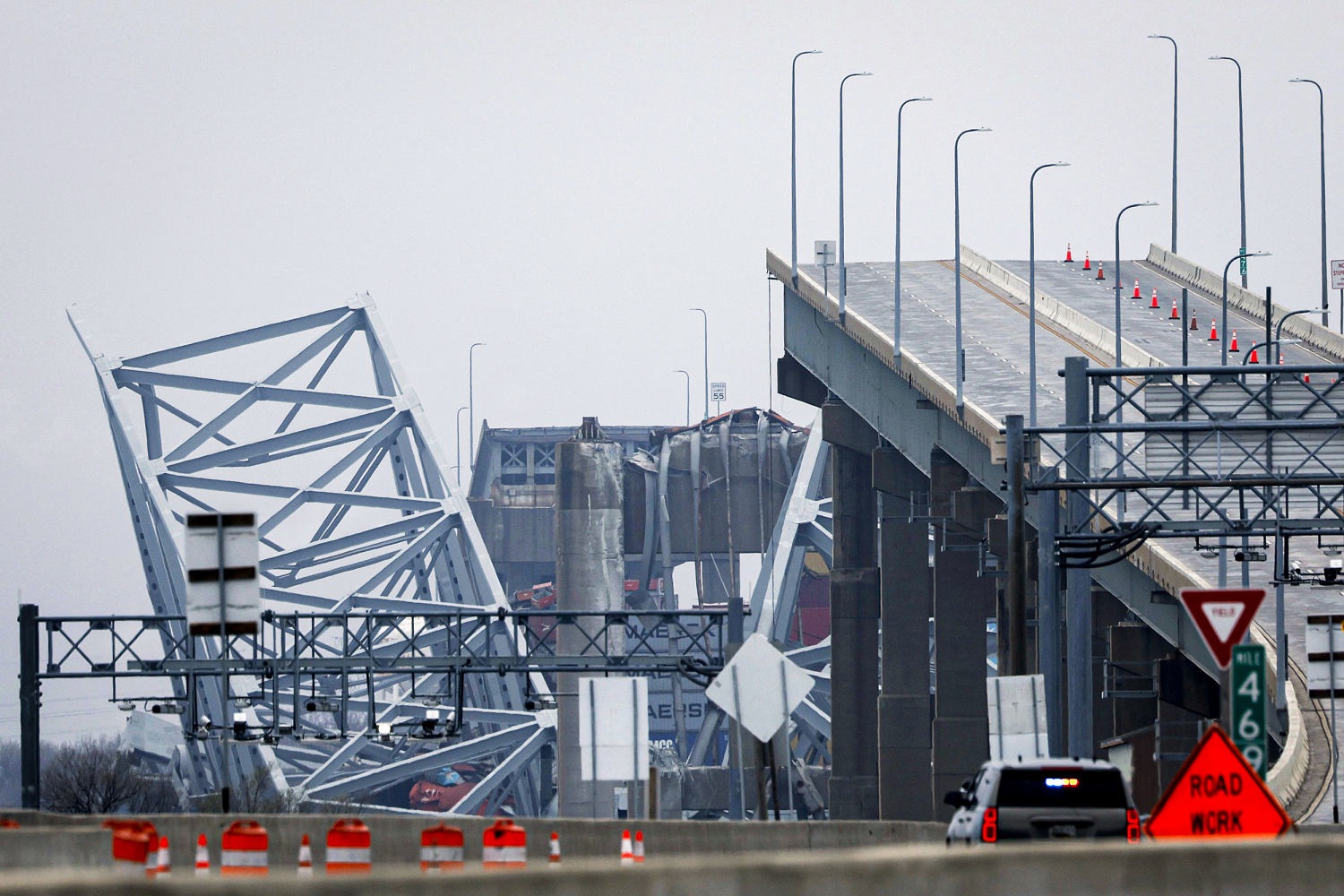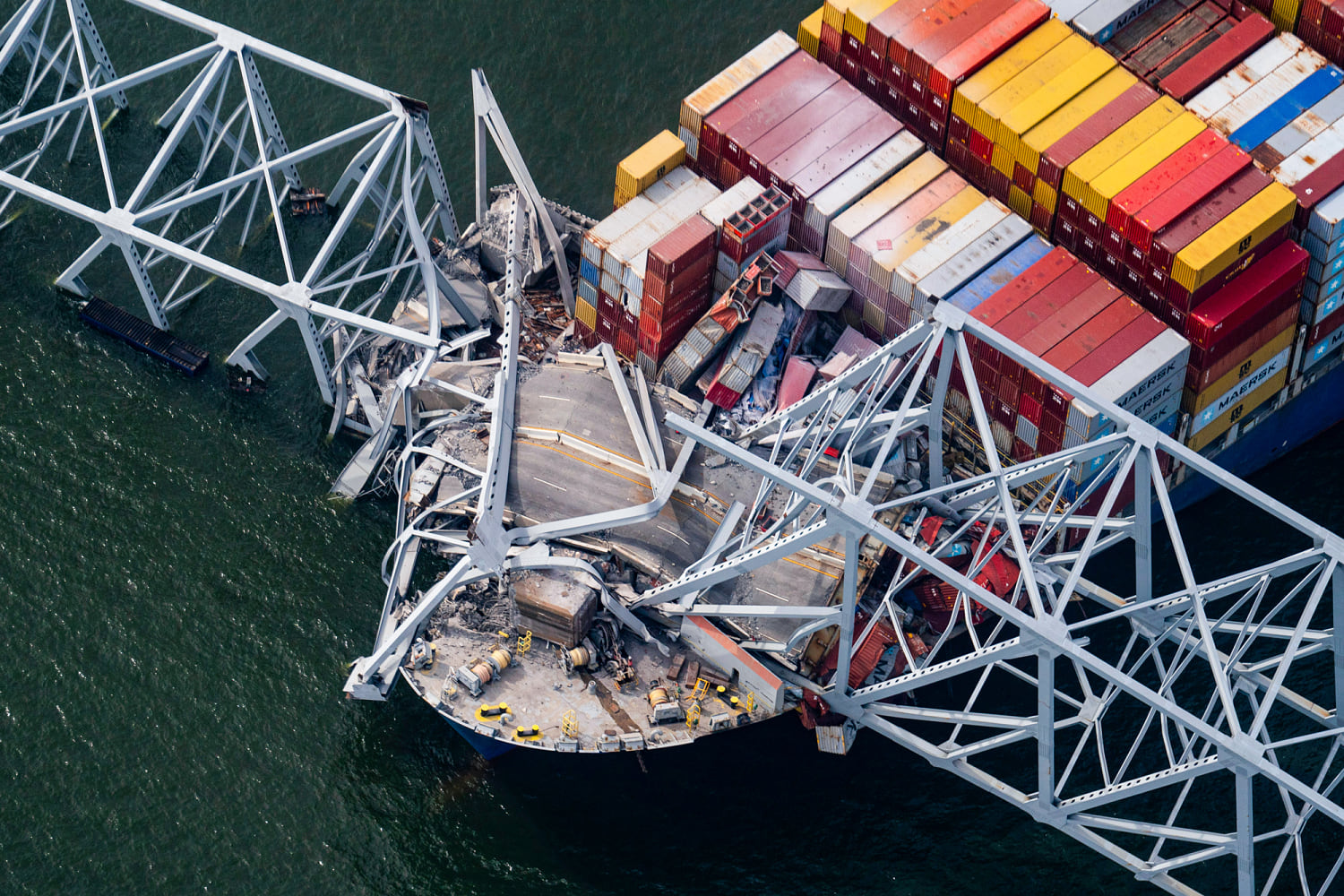Watch CBS News
Be the first to know
Get browser notifications for breaking news, live events, and exclusive reporting.
Watch CBS News
Be the first to know
Get browser notifications for breaking news, live events, and exclusive reporting.

LIVERMORE, Calif. — Most fast food workers in California will be paid at least $20 an hour beginning Monday when a new law is scheduled to kick in, giving more financial security to a historically low-paying profession while threatening to raise prices in a state already known for its high cost of living.
Democrats in the state Legislature passed the law last year in part as an acknowledgement that many of the more than 500,000 people who work in fast food restaurants are not teenagers earning some spending money, but adults working to support their families.
That includes immigrants like Ingrid Vilorio, who said she started working at a McDonald’s shortly after arriving in the United States in 2019. Fast food was her full-time job until last year. Now, she works about eight hours per week at a Jack in the Box while working other jobs.
“The $20 raise is great. I wish this would have come sooner,” Vilorio said through a translator. “Because I would not have been looking for so many other jobs in different places.”
The law was supported by the trade association representing fast food franchise owners. But since it passed, many franchise owners have bemoaned the impact the law is having on them, especially during California’s slowing economy.
Alex Johnson owns 10 Auntie Anne’s Pretzels and Cinnabon restaurants in the San Francisco Bay Area. He said sales have slowed in 2024, prompting him to lay off his office staff and rely on his parents to help with payroll and human resources.
Increasing his employees’ wages will cost Johnson about $470,000 each year. He will have to raise prices anywhere from 5% to 15% at his stores, and is no longer hiring or seeking to open new locations in California, he said.
“I try to do right by my employees. I pay them as much as I can. But this law is really hitting our operations hard,” Johnson said.
“I have to consider selling and even closing my business,” he said. “The profit margin has become too slim when you factor in all the other expenses that are also going up.”
Over the past decade, California has doubled its minimum wage for most workers to $16 per hour. A big concern over that time was whether the increase would cause some workers to lose their jobs as employers’ expenses increased.
Instead, data showed wages went up and employment did not fall, said Michael Reich, a labor economics professor at the University of California-Berkeley.
“I was surprised at how little, or how difficult it was to find disemployment effects. If anything, we find positive employment effects,” Reich said.
Plus, Reich said while the statewide minimum wage is $16 per hour, many of the state’s larger cities have their own minimum wage laws setting the rate higher than that. For many fast food restaurants, this means the jump to $20 per hour will be smaller.
The law reflected a carefully crafted compromise between the fast food industry and labor unions, which had been fighting over wages, benefits and legal liabilities for close to two years. The law originated during private negotiations between unions and the industry, including the unusual step of signing confidentiality agreements.
The law applies to restaurants offering limited or no table service and which are part of a national chain with at least 60 establishments nationwide. Restaurants operating inside a grocery establishment are exempt, as are restaurants producing and selling bread as a stand-alone menu item.
At first, it appeared the bread exemption applied to Panera Bread restaurants. Bloomberg News reported the change would benefit Greg Flynn, a wealthy campaign donor to Newsom. But the Newsom administration said the wage increase law does apply to Panera Bread because the restaurant does not make dough on-site. Also, Flynn has announced he would pay his workers at least $20 per hour.
Watch CBS News
Be the first to know
Get browser notifications for breaking news, live events, and exclusive reporting.

DUNDALK, Md. — The livelihoods of thousands of workers who process goods passing through the Port of Baltimore hang in the balance as cargo shipments grind to a halt after a container ship crashed into the Francis Scott Key Bridge this week.
“These longshore workers, if goods aren’t moving, they’re not working,” Transportation Secretary Pete Buttigieg said following Tuesday’s crash, which killed six construction workers on the bridge when it collapsed into the Patapsco River. “They’re likely working right now, but that work won’t last long, and that’s one of our main areas of concern.”
Buttigieg noted the port produces $2 million in wages each day for the workers who make a living there, like crane technician Steve Rehak and his two sons.
“It’s pretty devastating,” said Rehak, 61, who added that he has worked at the port for 14 years. “When the ships aren’t here, you’re not making any money.”
Rehak says he will still work for the foreseeable future conducting preventive maintenance and repairs, but his hours have been cut to 40 hours per week — eliminating lucrative overtime.
“This is gonna be tough on them,” he said about his sons’ financial stability.
While crane technicians typically work around the clock regardless of cargo traffic, longshoremen work only when ships are present.
For Shawn Jackson, a longshoreman daily hire, the uncertainty is the hardest part.
“It’s the stress of not knowing,” he said of the lack of a timeline for the port’s reopening.
“The workers are worried,” said Tim Krajewski, secretary-treasurer for the International Longshoremen’s Association’s Local 333 chapter. “It’s a family-sustaining job, and them losing all that income — you’re not just talking severances, you’re talking flat cut when ships don’t come in, period.” Most workers take shifts day by day.
The Port of Baltimore, which comprises publicly and privately owned marine terminals, said Friday that despite speculation, “the fact of the matter is we do not know” when the channel will reopen. The state of Maryland estimates that roughly 15,300 direct jobs are generated by the critical shipping hub and 140,000 jobs are linked to it.
Maryland Gov. Wes Moore has repeatedly said that re-opening the port is one of the main priorities — a point he reiterated at a news conference on Saturday.
Moore said the Small Business Administration accepted a request to approve a disaster declaration, granting small businesses affected by the tragedy the opportunity to apply for low-interest loans of up to $2 million.
“They’re gonna help us ensure that our small businesses get the cash that they need to pay their bills and to keep people employed,” he said Saturday.
Applications need to be submitted online by Dec. 30, 2024.
The local chapters of the ILA are set to hold an emergency meeting on Monday to discuss a path forward. In the meantime, union officials are advising members to call their mortgage, car and credit card lenders to ask for deferred payments.
State lawmakers on Friday introduced a bill to provide temporary financial relief for workers and businesses affected by the port’s closure.
The proposed Protecting Opportunities and Regional Trade Act — or PORT Act — includes support for regularly paid port workers who don’t qualify for unemployment, assistance for businesses that need help retaining their local workforce, and incentives for companies to keep their work in Baltimore long term, instead of permanently relocating to another port where ships are being diverted, such as Wilmington, Delaware, or Norfolk, Virginia.
The legislation is led by state Senate President Bill Ferguson (D), who represents the district where the port is located. He hopes to take lessons learned from the pandemic — during which the port remained open — and apply them to Maryland’s current economic emergency.
“If we could help support small businesses and keep people employed in those positions, that was more efficient and a better way to help stabilize the small businesses, rather than having them lay off their entire team and then just hope for a time in the future that they can re-employ them back into those positions when the channel’s back open,” Ferguson told NBC News.
If passed, the measures would immediately go into effect upon Gov. Moore’s signature. The state’s General Assembly adjourns just after midnight on April 9.
Until then, it’s a waiting game.
“Summertime is our busy time,” Krajewski said. “The next couple of months was supposed to ramp up into a very busy season, so we really want that channel to be open as quickly as possible.”
Last year was record-shattering for the Port of Baltimore — its more than 8,000 workers processed 52.3 million tons of foreign cargo worth more than $80 billion.
Starting Monday, most California fast-food workers will earn at least $20 an hour — the highest minimum wage across the U.S. restaurant industry. Yet the pay hike is sparking furious debate, with some restaurant owners warning of job losses and higher prices for customers, while labor advocates tout the benefits of higher wages.
The new law, signed by Governor Gavin Newsom last fall, takes effect on April 1, requiring that fast-food chains with at least 60 locations nationwide pay workers at least $20 an hour. The means the state’s 553,000 fast-food workers will earn more than the state’s $16 minimum wage for all other industries.
The new baseline wage comes as the fast-food industry is seeing booming earnings, with big chains like McDonald’s enjoying strong revenue growth and wider profit margins in recent years. That’s partly due to menu prices that have far outpaced inflation, with fast-food costs surging 47% over the past decade, compared with an average of 29% for all other prices, according to a new analysis from the Roosevelt Institute, a nonpartisan think tank.
“Prices have been so much higher than operating costs over the last decade that these companies could just absorb higher operating costs,” Roosevelt Institute labor expert Alí Bustamante, a co-author of the analysis, told CBS MoneyWatch. “This is about raising the floor and making sure that $20 being the new minimum wage puts workers on a better economic footing to cover their household needs.”
Prior to the April 1 pay hike, the highest paid fast-food workers in the U.S. were in Washington State, which has a minimum wage of $16.28 per hour.
Some California restaurant owners say that higher labor costs will lead to higher prices for customers, and even curb hiring. One California franchisee told CBS MoneyWatch that while major fast-food chains might be able to absorb such costs, smaller operators will struggle.
“We aren’t these big corporations with deep pockets — we’re not Wall Street, we are Main Street,” said Alex Johnson, who owns 10 franchised restaurants in the San Francisco area, including Auntie Anne’s and Cinnabons locations.
Johnson’s company is subject to the new wage law because the parent franchisors operate more than 60 restaurants across the U.S.
Alex Johnson
Johnson said the wage hike comes at a time when his restaurants are already coping with softer sales, which he attributes to consumers sapped by two years of elevated inflation and the high cost of living in California. To offset the new $20 minimum wage, Johnson expects to increase prices about 10% this year, which he plans to do in two smaller increments.
“You couldn’t think of a worse time to raise prices,” he said.
The typical California restaurant is facing an additional expense of $250,000 annually to cover the April 1 wage hike, according to the Save Local Restaurants coalition, citing data from a McDonald’s owner association. The group represents restaurant owners.
“We know we have to take something at a significant increase when you talk about a 20%-ish increase in wages,” Chipotle Chief Financial Officer Jack Hartung said on an earnings call last month about the California law.
Chipotle’s 3,400 locations across the U.S. could see a 1% increase in prices to compensate, he added.
Starbucks told the Los Angeles Times it plans to offset the higher wages by boosting prices, among other measures.
“There isn’t a quick-service restaurant owner in California who can easily shoulder an immediate 25% wage increase for all their employees,” Mike Whatley, vice president of state affairs and grassroots advocacy for the National Restaurant Association, a trade organization for the industry, told CBS MoneyWatch.
He added, “Consumers are starting to see this in menu prices, and employees across the state are starting to feel it, too.”
Some critics of the wage law said the higher costs will lead to layoffs and curb hiring. Already, some Pizza Hut locations in California are planning to cut jobs, according to state labor filings. Pizza Hut didn’t immediately return a request for comment.
Johnson noted that he’s not hiring at the moment and plans to introduce more automation, such as ordering kiosks, to reduce his need for human labor. He’s also thinking about selling his franchise locations in California to focus on restaurants in Nevada, where costs are lower.
“I work really hard to treat employees fairly, but there are consequences to these actions that increase costs — we’re not hiring anymore, and I’m contemplating closing or selling my restaurants,” Johnson added. “It’s a sad time.”
Labor advocates argue the new law will help fast-food workers, who earn an average of $16.60 an hour, or just over $34,000 per year, according to government data. That’s below the poverty line for a family of four in California.
The higher pay is “a transformational step toward an economy that works for all, not just billionaires,” Tia Orr, executive director of the Service Employees International Union California, a labor group that pushed for the law, told the Associated Press.
When Newsom signed the law last year, he dismissed the notion that fast-food jobs are primarily held by teenagers, underscoring that many households depend on the jobs for income. The average age of fast-food workers is about 26, according to Business Insider.
Meanwhile, dozens of states and localities have hiked their minimum wages during the past several years, even as the federal baseline remains at $7.25 an hour — a rate that has remained frozen since 2009. Some economic research has found that higher wages don’t lead to job losses, while having the upside of providing financial security to workers and boosting consumer spending, which stimulates broader economic growth.
California businesses have had to digest multiple wage hikes during the past several years, yet continued to operate, experts point out.
“You’ve experienced minimum wage hikes in California for over 10 years now,” Bustamante said. “You don’t open up a business in California without expecting minimum wage increases.”
Watch CBS News
Be the first to know
Get browser notifications for breaking news, live events, and exclusive reporting.
BEIJING (AP) — At 53, Guan Junling is too old to get hired at factories anymore. But for migrant workers like her, not working is not an option.
For decades, they have come from farming villages to find work in the cities. Toiling in sweatshops and building apartment complexes they could never afford to live in, they played a vital role in China’s transformation into an economic powerhouse.
As they grow older, the first generation of migrant workers is struggling to find jobs in a slowing economy. Many are financially strapped, so they have to keep looking.
“There is no such thing as a ‘retirement’ or ‘pensions’ for rural people. You can only rely on yourself and work,” Guan said. “When can you stop working? It’s really not until you have to lie in bed and you can’t do anything.”
She now relies on housecleaning gigs, working long days to squirrel away a little money in case of a health emergency. Migrant workers can get subsidized health care in their hometowns, but they have little or no coverage elsewhere. If Guan needs to go to hospital in Beijing, she has to pay out of pocket.
As China’s population ages, so are its migrant workers. About 85 million were over 50 in 2022, the latest year for which data is available, accounting for 29% of all migrant workers and up from 15% a decade earlier. With limited or no pensions and health insurance, they need to keep working.
About 75% said they would work beyond the age of 60 in a questionnaire distributed to 2,500 first-generation migrant workers between 2018 to 2022, according to Qiu Fengxian, a scholar on rural sociology who described her research in a talk last year. The first-generation refers to those born in the 1970s or earlier.
Older workers are being hit by a double whammy. Jobs have dried up in construction due to a downturn in the real estate market and in factories because of automation and the slowing economy. Age discrimination is common, so jobs tend to go to younger people.
“For young people, of course, you can still find a job, positions are available, though the wage is not high enough,” said Zhang Chenggang of Beijing’s Capital University of Economics and Business, where he directs a center researching new forms of employment.
“But for older migrant workers, there simply are no positions,” said Zhang, who conducted field studies at four labor markets across China late last year. “Now, the problem is that no matter how low the wage is, as long as someone pays, you will take the job.”
Some job recruiters contacted by AP said older workers don’t work well or have underlying illnesses. Others declined to answer and hung up.
Many are turning to temporary work. Zhang Zixing was looking for gigs on a cold winter day late last year at a sprawling outdoor labor market on the outskirts of Beijing.
He said he was fired from a job delivering packages because of his age about three years ago, when he reached 55. In December, he was earning 260 yuan (about $35) a day installing cables at construction sites.
Zhang Quanshou, a village official in Henan province and a delegate to China’s National People’s Congress, said some older migrant workers are just looking for work near their hometowns, while others still head to larger cities.
“Some older migrant workers are finding temporary jobs, so it is important to build the temporary job market and provide a better platform for such services,” Zhang, the Communist Party secretary of the village, said in an emailed response to questions during a recent annual meeting of the Congress.
Guan, who comes from a rice-farming region in the north, worked on a clothing factory assembly line until she was laid off when she was in her 40s. She then worked various jobs in different cities, winding up in Beijing in 2018.
She works seven days a week, partly because she’s afraid labor agencies won’t call again if she turns an offer down.
Over February’s Lunar New Year holiday, when migrant workers traditionally go home to visit their families, she stayed in Beijing as a caretaker for an elderly woman, because the woman needed help and she needed the money.
“People either want someone who’s educated or young, and I don’t meet either of those requirements,” said Guan, who dropped out after middle school because her parents had only enough money to educate their son. “But then I think, regardless of how other people look at me, I have to survive.”
Guan worries jobs will be even harder to find when she reaches 55. The retirement age for women in China is 50 or 55, depending on the company and type of work. For men, it is 60.
Lu Guoquan, a trade union official, has proposed relaxing age limits for jobs, judging workers by their physical condition instead of their age and making it easier for older people to find work through labor markets and online platforms.
“A large number of farmers have entered cities, making an important contribution to the modernization of our country,” said his proposal, made to an advisory body during the recent national congress and seen by the AP.
As workers grow older, “they are gradually becoming a relatively vulnerable group in the labor market and face a number of thresholds and problems in continuing to work,” it said.
Lu, director of the general office of the All-China Federation of Trade Unions, declined an interview request.
Duan Shuangzhu has spent 25 years collecting trash in one Beijing neighborhood after giving up a life of raising sheep and cows in north China’s Shanxi province when he was in his 40s. He gets up at 3:30 a.m. seven days a week to make his rounds. For that, he earns 3,300 yuan ($460) a month and has a basement room to live in.
Duan’s wife stayed on the farm, where she looks after their grandchildren. Duan has managed to save money for himself, his children and his grandchildren, but never paid into a pension system, directing what little he earns to his family.
That fits the pattern Qiu found in her research, which she published in a book last year. Older migrant workers moved to the cities to improve the lives of their children and other relatives, not themselves, she found. Most have limited or no savings, and few have climbed the economic ladder. They hoped their children would, but most ended up as migrant workers, too.
Most migrant workers’ earnings were spent on their children’s marriages, homes and education, Qiu said in her talk. “Basically, they did not begin working for themselves and planning for their own late years until the age of 55.”
Duan, at 68, has no plans to quit.
“As long as I can work every day, it’s enough to survive,” he said, standing next to a set of community rubbish bins, color-coded for recycling. “I didn’t grow up in a wealthy family — just filling my stomach each day is enough for me.”
___
Associated Press researcher Wanqing Chen contributed to this story.

BALTIMORE — The wife of one of the construction workers who survived the Francis Scott Key Bridge collapse says it’s a miracle he is alive as he doesn’t know how to swim.
Julio Cervantes was one of eight construction workers on the bridge when the Dali cargo ship’s lights flickered on and off and crashed into a support pillar, sending the bridge into the Patapsco River in the early hours of Tuesday.
He and another man were rescued that day; the bodies of two more were recovered Wednesday. The remaining four have not been found but are presumed dead.
“All of the men were on a break in their cars when the boat hit. We don’t know if they were warned before the impact,” Cervantes’ wife, who did not disclose her name, told NBC News on Thursday.
Mere seconds after the Dali hit the bridge, it appeared to snap and fall into the dark water below.
“My husband doesn’t know how to swim. It is a miracle he survived,” the wife said.
Cervantes was taken to the hospital with a chest wound and was released the same day, his wife said. The other worker rescued Tuesday was in good condition and refused treatment, authorities previously said.
The remains of Alejandro Hernandez Fuentes, 35, and Dorlian Ronial Castillo Cabrera, 26, were recovered by searchers in the Port of Baltimore Wednesday morning. They were found in a red pickup truck trapped under 25 feet of water near what was once the middle of the bridge.
Hernandez Fuentes, 35, was from Mexico and lived in Baltimore; Castillo Cabrera, 26, was from Guatemala and lived in Dundalk, Maryland.
Cervantes’ wife said that her brother-in-law was one of the two men whose bodies were recovered Wednesday, but did not share his name. She said her entire family is of Mexican origin, and her nephew is among the still missing.
“We haven’t been able to sleep, waiting for word if they’re going to find a relative,” she said.
Audio from dispatch radio, published by Broadcastify, captured the moment police officers rushed to stop traffic and close the bridge — a move that likely saved countless lives — and called for a warning to the crew working on the bridge.
An officer on the dispatch audio said, “I’m not sure where, there’s a crew up there you might want to notify, whoever the foreman is, see if we can get them off the bridge temporarily.”
Another officer replied saying that once another police unit arrives, “I’ll go grab the workers on the Key Bridge.”
But it was too late. Moments later, another officer said over the radio: “The whole bridge just fell down! Start, start … everybody. The whole thing just collapsed.”
The collapse sent shock waves across the country, sparked supply chain concerns and broke the hearts of locals who considered the Francis Scott Key Bridge, which stretches a mile-and-a-half and carries Interstate 695, a city jewel. President Joe Biden has vowed to reconstruct the bridge as soon as possible.
An investigation into what caused the crash and subsequent bridge collapse is underway by the National Transportation Safety Board. It is anticipated to take one to two years.
George Solis reported from Baltimore and Marlene Lenthang from Los Angeles.
AZACUALPA, Honduras — The construction workers who went missing in the Baltimore bridge collapse came to the Maryland area from Mexico or Central America, including an enterprising Honduran father and husband who started a delivery business before the pandemic forced him to find other work, according to his family.
Police managed to close bridge traffic seconds before a cargo ship slammed into one of the Francis Scott Key Bridge’s supports early Tuesday, causing the span to fall into the frigid Patapsco River. There wasn’t time for a maintenance crew filling potholes on the span to get to safety.
At least eight people fell into the water and two were rescued. Two bodies were recovered Wednesday and four remained missing and were presumed dead.

The governments of Mexico, Guatemala, El Salvador and Honduras confirmed that their citizens were among the missing.
Maynor Yassir Suazo Sandoval, 38, was the youngest of eight siblings from Azacualpa, a rural mountainous area in northwestern Honduras along the border with Guatemala.
Eighteen years ago, he set out on his own for the U.S. looking for opportunities. He had worked as an industrial technician in Honduras, repairing equipment in the large assembly plants, but the pay was too low to get ahead, one of his brothers, Martín Suazo Sandoval, said Wednesday while standing in the dirt street in front of the family’s small hotel in Honduras.
“He always dreamed of having his own business,” he said.
Another brother, Carlos Suazo Sandoval, said Maynor hoped to retire one day back in Guatemala.
“He was the baby for all of us, the youngest. He was someone who was always happy, was always thinking about the future. He was a visionary,” he told The Associated Press by phone Wednesday from Dundalk, Maryland, near the site of the bridge collapse.
Maynor entered the United States illegally and settled in Maryland. At first, he did any work he could find, including construction and clearing brush. Eventually, he started a package delivery business in the Baltimore-Washington area, Martín Suazo Sandoval said.
Other siblings and relatives followed him north.

“He was the fundamental pillar, the bastion so that other members of the family could also travel there and later get visas and everything,” Martín Suazo Sandoval said. “He was really the driving force so that most of the family could travel.”
Maynor has a wife and two children ages 17 and 5, he said.
The COVID-19 pandemic forced Maynor to find other work, and he joined Brawner Builders, the company that was performing maintenance on the bridge when it collapsed.
Martín Suazo Sandoval said Maynor never talked about being scared of the work, despite the heights he worked at on the bridges. “He always told us that you had to triple your effort to get ahead,” Martín Suazo Sandoval said. “He said it didn’t matter what time or where the job was, you had to be where the work was.”
Things had been going well for him until the collapse. He was moving through the steps to get legal residency and planned to return to Honduras this year to complete the process, his brother said.
Even though Maynor had not been able to return to Honduras, he had financially supported various nongovernmental social organizations in town, as well as the youth soccer league, his brother said. The area depends largely upon agriculture — coffee, cattle, sugarcane — he said.
Maynor’s employer broke the news of his disappearance to his family, leaving them devastated, especially his mother, who still lives in Azacualpa, Martín Suazo Sandoval said.
“These are difficult moments, and the only thing we can do is keep the faith,” he said, noting that his younger brother knew how to swim and could have ended up anywhere. If the worst outcome is confirmed, he said the family would work to return his body to Honduras.

In Mexico, President Andrés Manuel López Obrador said three Mexicans were on the bridge when it fell, including one who was injured but rescued and two who were still missing. He wouldn’t share their names for the families’ privacy.
The tragedy illustrated the contributions that migrants make to the U.S. economy, López Obrador said.
“This demonstrates that migrants go out and do risky jobs at midnight. And for this reason, they do not deserve to be treated as they are by certain insensitive, irresponsible politicians in the United States,” he said.
Later, Col. Roland L. Butler Jr., superintendent of Maryland State Police, announced that the bodies of two men, ages 35 and 26, had been located by divers inside a red pickup submerged in about 25 feet (7.6 meters) of water near the bridge’s middle span.
One was Guatemalan Dorlian Ronial Castillo Cabrera, 26, and the other 35-year-old Alejandro Hernández Fuentes, originally from Mexico.
Guatemala’s Foreign Affairs Ministry had earlier confirmed that two of its citizens were among the missing. And El Salvador’s foreign minister, Alexandra Hill Tinoco, posted Wednesday on X that one Salvadoran citizen, Miguel Luna, was among the missing workers.
Federal and state investigators have said the crash appears to have been an accident.
Watch CBS News
Be the first to know
Get browser notifications for breaking news, live events, and exclusive reporting.